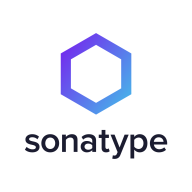

Veracode and Sonatype Lifecycle are prominent in application security. Sonatype Lifecycle has the upper hand due to its comprehensive feature set and long-term value perception.
Features: Veracode is known for its robust static analysis capabilities, extensive security vulnerability database, and ease of cloud-based deployment. Sonatype Lifecycle is praised for its advanced open-source component analysis, integration with DevOps processes, and seamless integration with existing environments.
Room for Improvement: Veracode needs flexible scanning options, enhanced performance efficiency, and more customization. Sonatype Lifecycle could benefit from improved reporting, user-friendly configuration, and a reduced learning curve.
Ease of Deployment and Customer Service: Veracode offers ease of cloud-based deployment, with positively rated customer service but limited customization. Sonatype Lifecycle integrates well in development environments but requires a steep learning curve, with mixed customer service reviews.
Pricing and ROI: Veracode is considered cost-effective, providing good ROI due to its security benefits. Sonatype Lifecycle has higher pricing, justified by features, resulting in positive ROI perceptions. It is regarded as a premium choice for its comprehensive features.
We have seen cost savings and efficiency improvements as we now know what happens in what was previously a black box.
The scanners of Veracode bring status of the weaknesses in the current infrastructure. It scans and provides reports regarding the servers, the network, and the applications running on those servers.
Regarding price, the evaluation should focus on how efficiently they will recover their investment, considering the time saved through the use of Veracode Fix, for example, and the ability to fix code at dev time compared to the problems faced when fixing after the product is already deployed.
They are helpful when we raise any tickets.
Access to the engineering team is crucial for faster feedback on the product fix process.
They are very responsive and quick to help with queries within our scope.
They respond very quickly since security is something critical.
JFrog is easier to configure for high availability as it does not require extra components.
Cloud solutions are easier to scale than on-premise solutions.
It has a good capacity to scale effectively.
Sonatype Lifecycle is very stable, especially in the binary repository management use case for managing binary artifacts.
If the Veracode server is down, we experience many issues during the scan.
It's not that easy to onboard, but once they have been onboarded on the platform, and the pipeline configured alongside the product configured, it works effectively.
We also noticed a lack of detailed information for configuring Sonatype Lifecycle for high availability and data recovery.
If it could be integrated directly with code repositories such as Bitbucket or GitHub, without the need to create a pipeline to upload and decode code, it would simplify the code scan process significantly.
We had issues with scanning large applications. Scanning took a lot of time, so we kept it outside the DevOps pipeline to avoid delaying deployments.
A nice addition would be if it could be extended for scenarios with custom cleansers.
For larger numbers like our case with 1,000 user licenses, JFrog becomes much more cost-effective, roughly ten times cheaper than Sonatype.
It's not the most expensive solution.
If there's a security gap, you'll never know the cost or effect.
Pricing-wise, I find it a bit expensive because it's based on the number of users requesting access to Veracode.
The integration into our CICD pipeline enables us to continuously monitor code changes and identify new vulnerabilities.
The most valuable feature for us is Sonatype Lifecycle's capability in identifying vulnerabilities.
It offers confidence by preventing exposure to vulnerabilities and helps ensure that we are not deploying vulnerable code into production.
The best features in Veracode include static analysis and the early detection of vulnerable libraries; it integrates with tools such as Jenkins.
It fixes issues directly in the IDE while you're doing it.


Sonatype Lifecycle is an open-source security and dependency management software that uses only one tool to automatically find open-source vulnerabilities at every stage of the System Development Life Cycle (SDLC). Users can now minimize security vulnerabilities, permitting organizations to enhance development workflow. Sonatype Lifecycle gives the user complete control over their software supply chain, allowing them to regain wasted time fighting risks in the SDLC. In addition, this software unifies the ability to define rules, actions, and policies that work best for your organizations and teams.
Sonatype Lifecycle allows users to help their teams discover threats before an attack has the chance to take place by examining a database of known vulnerabilities. With continuous monitoring at every stage of the development life cycle, Sonatype Lifecycle enables teams to build secure software. The solution allows users to utilize a complete automated solution within their existing workflows. Once a potential threat is identified, the solution’s policies will automatically rectify it.
Benefits of Open-source Security Monitoring
As cybersecurity attacks are on the rise, organizations are at constant risk for data breaches. Managing your software supply chain gets trickier as your organization grows, leaving many vulnerabilities exposed. With easily accessible source code that can be modified and shared freely, open-source monitoring gives users complete transparency. A community of professionals can inspect open-source code to ensure fewer bugs, and any open-source dependency vulnerability will be detected and fixed rapidly. Users can use open-source security monitoring to avoid attacks through automatic detection of potential threats and rectification immediately and automatically.
Reviews from Real Users
Sonatype Lifecycle software receives high praise from users for many reasons. Among them are the abilities to identify and rectify vulnerabilities at every stage of the SDLC, help with open-source governance, and minimize risk.
Michael E., senior enterprise architect at MIB Group, says "Some of the more profound features include the REST APIs. We tend to make use of those a lot. They also have a plugin for our CI/CD.”
R.S., senior architect at a insurance company, notes “Specifically features that have been good include:
• the email notifications
• the API, which has been good to work with for reporting, because we have some downstream reporting requirements
• that it's been really user-friendly to work with.”
"Its engine itself is most valuable in terms of the way it calculates and decides whether a security vulnerability exists or not. That's the most important thing. Its security is also pretty good, and its listing about the severities is also good," says Subham S., engineering tools and platform manager at BT - British Telecom.
Veracode is a leading provider of application security solutions, offering tools to identify, mitigate, and prevent vulnerabilities across the software development lifecycle. Its cloud-based platform integrates security into DevOps workflows, helping organizations ensure that their code remains secure and compliant with industry standards.
Veracode supports multiple application security testing types, including static analysis (SAST), dynamic analysis (DAST), software composition analysis (SCA), and manual penetration testing. These tools are designed to help developers detect vulnerabilities early in development while maintaining speed in deployment. Veracode also emphasizes scalability, offering features for enterprises that manage a large number of applications across different teams. Its robust reporting and analytics capabilities allow organizations to continuously monitor their security posture and track progress toward remediation.
What are the key features of Veracode?
What benefits should users consider in Veracode reviews?
Veracode is widely adopted in industries like finance, healthcare, and government, where compliance and security are critical. It helps these organizations maintain strict security standards while enabling rapid development through its integration with Agile and DevOps methodologies.
Veracode helps businesses secure their applications efficiently, ensuring they can deliver safe and compliant software at scale.
We monitor all Application Security Tools reviews to prevent fraudulent reviews and keep review quality high. We do not post reviews by company employees or direct competitors. We validate each review for authenticity via cross-reference with LinkedIn, and personal follow-up with the reviewer when necessary.